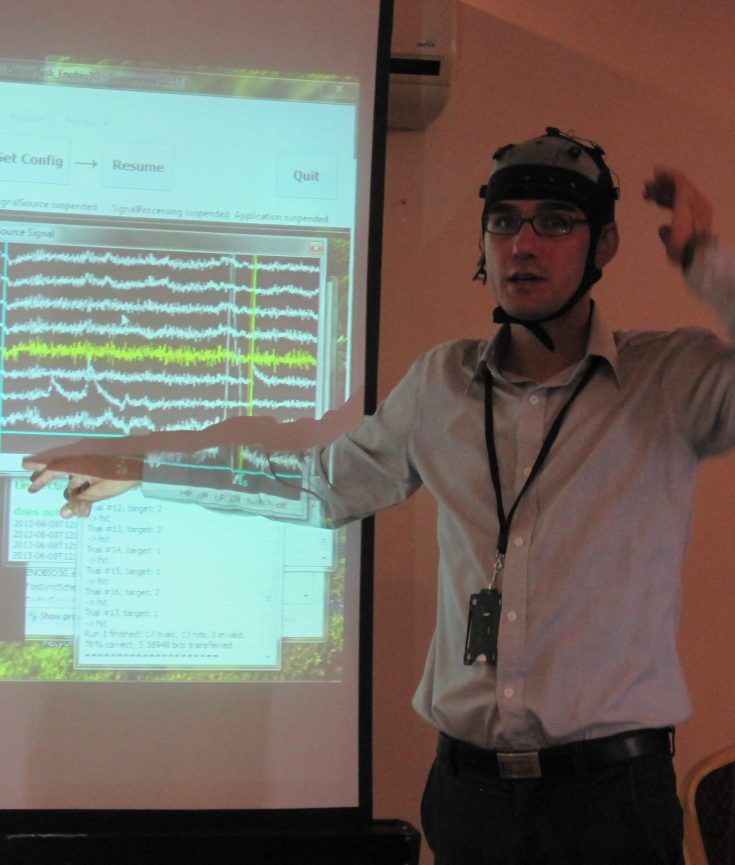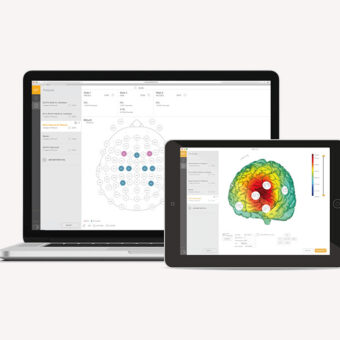On 11th November 2012, I successfully defended my PhD at the University of Barcelona. I will never forget that date and I still vividly remember all the emotions I felt that day. After 5 years of intense research, I had 45 minutes to brief the jury about the motivation, methods and results of my research.
I received great feedback from my PhD jury and I was awarded with the Cum Laude merit. In this post I will briefly explain the 3 different research lines I presented in my PhD entitled “Computational Intelligence techniques applied to Electrophysiological data analysis”.
As we can see in the title, 3 main concepts are treated in this PhD:
- Data analysis – This includes data preprocessing (application of filters, cleaning out the artefacts, etc…) and also feature extraction. Electrophysiological signals are complex and with the naked eye we cannot usually see the meaningful “hidden” information of the signals.
- Computational intelligence – In my 3 research lines I have applied a machine learning step in order to classify my EEG data in an automatic way. In order to do that, you need to train the classifiers with relevant features. I have also applied other computational intelligence techniques such as Genetic Algorithm for a feature selection step I applied in one of the components of my research.
- Electrophysiology can be defined as the study of electrical properties of the tissues of living organisms. Electrophysiology is a broad field that includes form microscopic to macroscopic recordings. Although my PhD dealt mostly with EEG, I also studied other electrophysiological signals such as ECG, GSR, EMG and EOG.
In the next sections I will briefly explain each one of these lines of research.
Biometry based on EEG and ECG signals
EEG brain waves can be used for biometric purposes, just as fingerprints. In this research, we extracted several EEG features (spectral features, autoregression coefficients, correlation, mutual information and coherence) and we were able to correctly classify them to authenticate and identify the subjects. Moreover, we also worked with ECG signals which also contain biometrics information. Fusing both EEG and ECG biometric system, we reached perfect performance, that is a classification rate of 100%.

Please refer to this blog post for further information on EEG biometrics.
EEG markers in Schizophrenia
The dataset used in this study was very valuable. I had access to EEG data recorded to patients suffering from a first psychotic outburst episode before taking any medication. Some of them were diagnosed as schizophrenic and had their EEG recorded after a few days and also after some months after following a treatment.
Using graph theory, I was able to extract relevant features from my 64 channel EEG data set. I also applied a Genetic Algorithm for a feature selection stage, since I ended up having thousand of features and for any machine learning algorithm to work well, the dimensionality of the feature vector should be low. More information about this research can be found in this post.
Stress markers in the EEG signals
The last line of research I pursued in my PhD was related with the finding of stress markers in the EEG signal. 12 healthy subjects participated in this study. They had to perform several tasks designed to elicit different levels of stress. By averaging over subjects we found that alpha asymmetry and alpha/beta ratio features correlated very well with the different elicited stress levels. In a second stage we also applied classifiers to detect the stress levels on a subject-to-subject basis, with very good results (performance over 90%). More on this can be found in this previous post.



